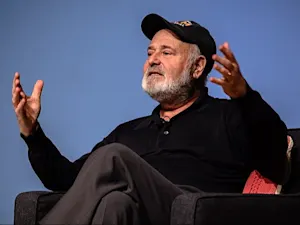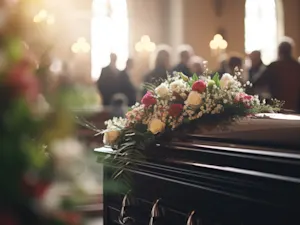
The Golden State Killer: The Hunt for a Monster Hidden in Plain Sight
For over a decade, the Golden State Killer prowled the suburbs of California, terrorizing families and communities with his brutal attacks. He slipped into homes under the cover of darkness, his face masked in shadows, leaving behind a trail of devastation and despair. Despite his reign of terror, the killer remained a ghost, eluding capture for more than 40 years. Then, in a stunning twist, detectives used groundbreaking technology to finally unmask him, revealing the man behind the horrors: Joseph James DeAngelo Jr., a former police officer who had quietly blended into suburban life. This is the story of how detectives and technology brought an end to one of America's longest unsolved mysteries.
Who were the Golden State Killer's victims?
The Golden State Killer didn't discriminate. He targeted couples, single women, and even children, leaving entire communities paralyzed with fear. Each victim represented a life full of potential, cruelly cut short or forever altered by his actions.
Claude Snelling (Sept. 11, 1975): The terror began in Visalia, California, where the killer, then known as the "Visalia Ransacker," broke into Claude Snelling's home and attempted to kidnap his teenage daughter. Snelling, a journalism professor and devoted father, rushed to protect her, confronting the intruder. In cold blood, the killer shot him twice, leaving Snelling to die on his front lawn while his daughter watched in horror. This marked the beginning of a trail of violence that would span more than a decade.
Dr. Robert Offerman and Dr. Debra Alexandria Manning (Dec. 30, 1979): Dr. Offerman and his girlfriend, Dr. Manning — a well-respected orthopedic surgeon and a clinical psychologist, respectively — enjoyed a quiet evening together at Offerman's condominium in Goleta, California. That night, the killer slipped into their home. He tied them up, but Offerman managed to free himself, attempting to fight back. In a rage, the killer shot him and then raped and killed Manning. Their lifeless bodies told a story of resistance and brutality — evidence of the fight they put up against an unstoppable predator.
Keith and Patrice Harrington (Aug. 19, 1980): Newlyweds Keith and Patrice Harrington had just started their life together in a beautiful home in Dana Point, California. One night, the Golden State Killer crept into their sanctuary. He bound them and bludgeoned them to death. Patrice also suffered a brutal sexual assault. When their bodies were discovered, investigators struggled to comprehend the sheer brutality of the attack. The Harringtons' murder sent shockwaves through the community, as residents realized that no one - not even in the safety of their own homes - was beyond this killer's reach.
Cheri Domingo and Gregory Sanchez (July 27, 1981): Cheri Domingo had moved into her aunt's house in Goleta, California, hoping for a fresh start. Her boyfriend, Gregory Sanchez, was visiting the night the killer broke in. Sanchez tried to fight back, but the killer shot him before bludgeoning him to death. He then turned on Domingo, raping her before ending her life with savage blows. Investigators found signs of a struggle, evidence that the couple fought bravely in their final moments.
Janelle Lisa Cruz (May 4, 1986): Janelle Cruz was only 18, with her whole life ahead of her, when the Golden State Killer broke into her home in Irvine, California. She was alone when he attacked, raping and beating her to death with a pipe wrench. The brutality of the crime left even seasoned investigators shaken. Cruz's murder became the killer's final known crime — and then, just as suddenly as he had appeared, he vanished.
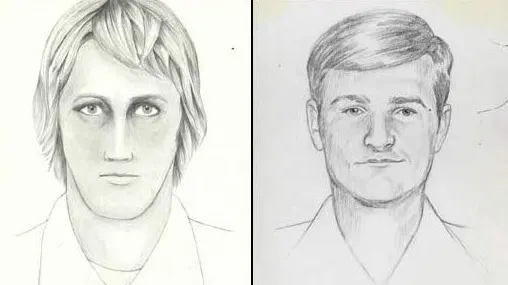 Various police sketches of the East Area Rapist, eventually known as the Golden State Killer. Photo by the Federal Bureau of Investigation. Public domain.
Various police sketches of the East Area Rapist, eventually known as the Golden State Killer. Photo by the Federal Bureau of Investigation. Public domain.
How did investigators finally catch the Golden State Killer?
For years, detectives chased every lead, yet the Golden State Killer always seemed one step ahead. As the years passed, the case grew cold, and the killer slipped into obscurity. But in 2018, everything changed.
The DNA Breakthrough: Investigators had preserved DNA samples from the crime scenes for decades, waiting for technology to catch up. When it finally did, they developed a full DNA profile of the killer, offering a glimmer of hope. The real breakthrough came when detectives turned to genetic genealogy, a technique never before used to solve a case of this magnitude.
GEDmatch™ and the Family Tree Search: Detectives uploaded the DNA profile to GEDmatch, a public genealogy database. The search revealed distant relatives, and from there, they painstakingly built out family trees, mapping out potential connections to the killer.
The Hunt Narrows: After months of meticulous work, one name rose to the top: Joseph James DeAngelo Jr., a former police officer living in Sacramento, California. Investigators followed him, waiting for the right moment to collect a fresh DNA sample.
The Discarded DNA Match: One day, DeAngelo casually discarded a tissue in the trash. Detectives retrieved it, and when they compared it to the DNA left at the crime scenes, it matched. The Golden State Killer's reign of terror had finally come to an end.
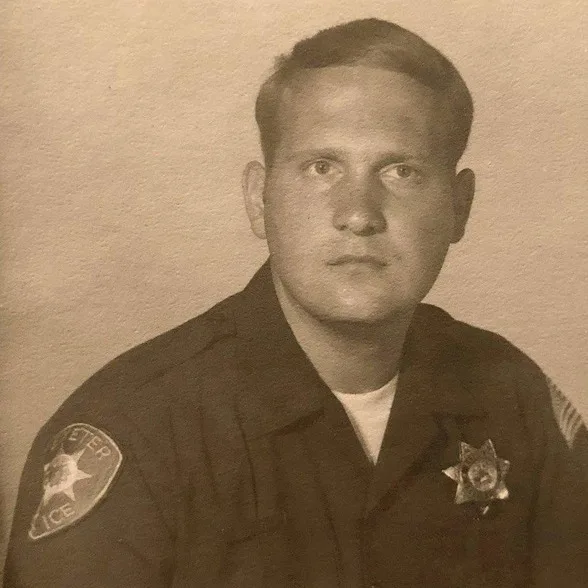 Photo of Joseph James DeAngelo, who joined the Exeter Police Department in 1973. Photo by the Santa Barbara County Sheriff's Office, courtesy of Pedestrian TV. Public domain.
Photo of Joseph James DeAngelo, who joined the Exeter Police Department in 1973. Photo by the Santa Barbara County Sheriff's Office, courtesy of Pedestrian TV. Public domain.
What made this investigation so controversial?
The capture of the Golden State Killer sparked heated debates about privacy and ethics. Investigators hadn't just used public databases — they had ventured into private ones, blurring the lines between justice and intrusion.
FamilyTreeDNA™ and MyHeritage™: Investigators uploaded the DNA profile to these private databases, setting up fake accounts to gain access. The companies initially denied involvement, but later admitted to allowing law enforcement access without a warrant. This revelation raised serious concerns about how far authorities should go to catch a killer, and what rights people have over their genetic information.
What happened to the Golden State Killer?
On April 24, 2018, police finally arrested Joseph James DeAngelo Jr. outside his home, ending a decades-long manhunt. For many of his victims and their families, it marked the moment they had waited for their entire lives.
The Courtroom Confrontation: DeAngelo sat in silence as his victims and their families confronted him during his sentencing hearing. The survivors, now decades older, recounted the pain and fear they had endured. Some showed pictures of loved ones taken far too soon, while others shared stories of courage and resilience.
The Guilty Plea: DeAngelo pleaded guilty to 13 counts of first-degree murder and 13 counts of kidnapping. He admitted to countless other rapes and crimes that could no longer be prosecuted, evoking tears, anger, and relief from those who had waited so long for this day.
Sentencing: In August 2020, DeAngelo received life in prison without the possibility of parole. The man who once terrorized entire communities now faced the rest of his life behind bars.
How did this case change criminal investigations forever?
The Golden State Killer's capture changed the landscape of crime-solving forever. It marked the first time investigators used genetic genealogy to solve a major cold case, and it has since become a valuable tool in identifying perpetrators of unsolved crimes. However, it also forced society to ask hard questions about privacy, consent, and how far law enforcement should go in the pursuit of justice.
Legislation and Policy Changes: In the wake of the case, many genealogy companies revised their policies, and lawmakers began to debate the ethical boundaries of using DNA to solve crimes. The case set a precedent, showing that even the most cunning criminals could not outrun technology forever.
The Killer, Finally Unmasked
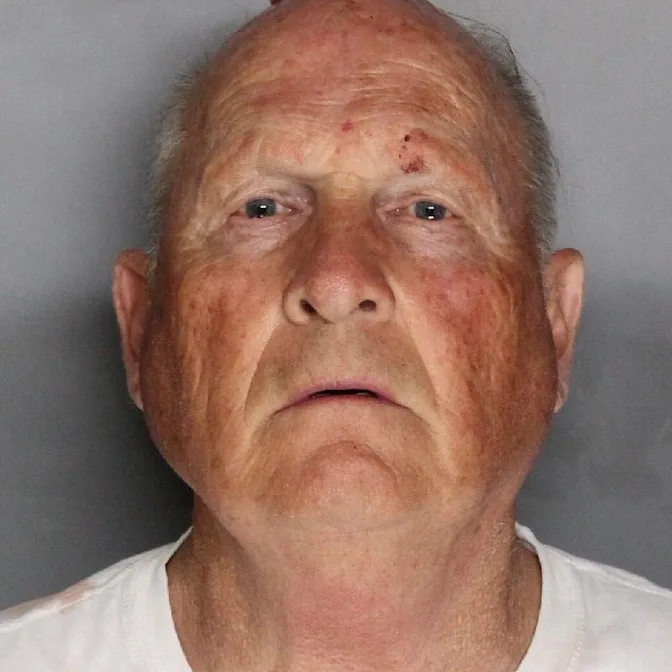 Mug shot of Joseph DeAngelo. Photo courtesy of Sacramento County Sheriff's Office. Public domain.
Mug shot of Joseph DeAngelo. Photo courtesy of Sacramento County Sheriff's Office. Public domain.
The unmasking of the Golden State Killer closed a dark chapter in California's history, but it also opened a door to a future where justice can catch up to those who think they've escaped it.
Joseph James DeAngelo Jr. now sits behind bars, but the echoes of his crimes still linger. As technology continues to evolve, his case stands as a testament to the tireless pursuit of truth — and a reminder that, eventually, even the most elusive monsters will face the light.
References: The untold story of how the Golden State Killer was found: A covert operation and private DNA | The 'Golden State Killer': Inside the timeline of crimes | Golden State Killer Trial | TIMELINE: A look back at the Golden State Killer's crime spree that lasted a decade | The Golden State Killer: A Timeline | Golden State Killer | DNA from genealogy site used to catch suspected Golden State Killer | We will find you: DNA search used to nab Golden State Killer can home in on about 60% of white Americans | How Genetic Genealogy Helped Catch The Golden State Killer | Golden State Killer















